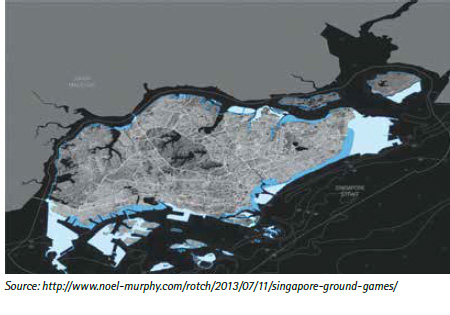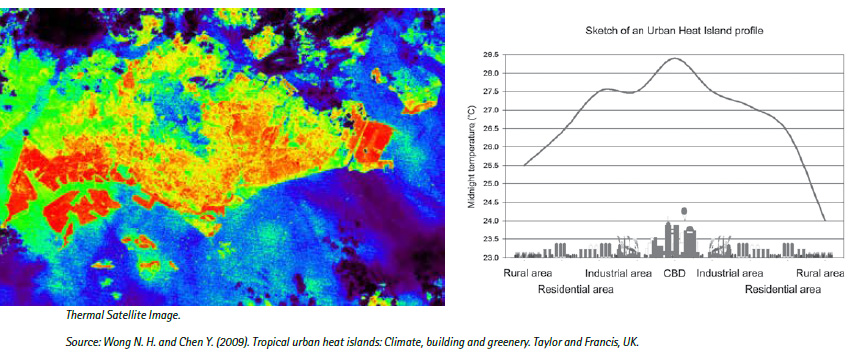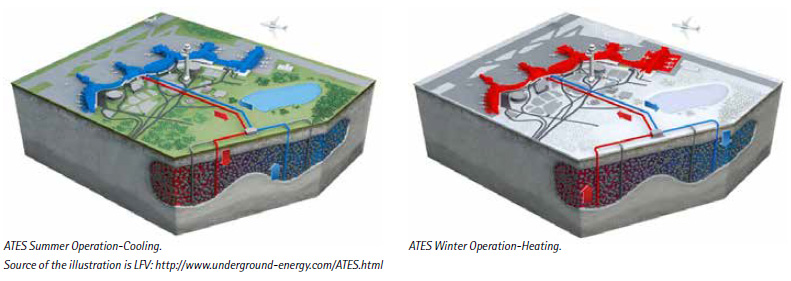|
by Vladan Babovic and Poh Seng Lee

 ingapore is arguably the most globalized country in the world, with a vibrant economy and high standards of living. Irrespective of how successful it gets, Singapore will always be limited by its land area. Hence, it is quite natural that land reclamation has been an essential part of economic growth. Since independence in 1965, the country has expanded by 22%, from 518 km2 to 719 km2. The government expects to need another 5,600 hectares by 2030 (The Straits Times, 2013). According to a report published last year by the United Nations Environment Programme, Singapore is by far the largest importer of sand worldwide, and the world's biggest user per person (see also the Economist, Issue of 28 February 2015). ingapore is arguably the most globalized country in the world, with a vibrant economy and high standards of living. Irrespective of how successful it gets, Singapore will always be limited by its land area. Hence, it is quite natural that land reclamation has been an essential part of economic growth. Since independence in 1965, the country has expanded by 22%, from 518 km2 to 719 km2. The government expects to need another 5,600 hectares by 2030 (The Straits Times, 2013). According to a report published last year by the United Nations Environment Programme, Singapore is by far the largest importer of sand worldwide, and the world's biggest user per person (see also the Economist, Issue of 28 February 2015).
With an average population density exceeding 7,650 inhabitants per square kilometer, Singapore is one of the most densely populated nations on the planet. To overcome this challenge, there is a growing interest in utilization of subterranean spaces. Humans have utilized the underground since the beginning of mankind. Historically, the underground provides shelter from enemies, as well as the elements, such as the cold of the winter and the heat of the summer.
Under its Research Innovation Enterprise (RIE) 2020 plan, the National Research Foundation prominently identified the Urban Solutions and Sustainability (USS) domain to focus on enhancements of the living environment and address the resource constraints through an interdisciplinary approach at the energy-water-land nexus. In this context, activation of Singapore's underground space to increase national water and energy resilience holds a significant promise.

Groundwater Potential of Reclaimed Land
For example, Singapore's national water agency PUB supported by researchers from the National University of Singapore carried out several studies aimed at the development of a better understanding of national groundwater potential (The Straits Times, 4 Sep 2015). Initially, the potential of Jurong Island was a focus of attention (The Straits Times, 3 Jan 2013). Jurong Island is composed of seven islands, made up of the sedimentary rock in the Jurong Formation, joined by reclamation. Under this particular study a model of the groundwater on Jurong Island has been developed to see if industries there can tap groundwater for process and other needs, and how much can be tapped sustainably. Groundwater — largely consisting of rainwater that has seeped into the ground — could be another source of water for Jurong Island's industries. Since rainwater that seeps into the ground is less dense than seawater, it forms a freshwater lens atop the saltier ocean and can thus be tapped.
The project, among other objectives, leads to a better understanding of how much groundwater can safely be tapped, and at what rate — depending on rainfall — groundwater supplies get recharged. As industry expands on the island, demand for water for cooling and industrial processes will also rise from the 35 million gallons per day to double that over the next 10 years.
This and other exploratory studies aim to establish whether Singapore's groundwater could be extracted for use on a regular basis, or to serve as "water banks" for drought periods. Studies are now being done on groundwater models, and the data collected will help validate these models.

Geothermal Potential of Urban Heat Island
One of the most urgent issues globally is energy overconsumption. The human civilization is consuming approximately 1.5 times more resources than Earth can sustain (The Living Planet, 2012), leading to exhaustion of natural resources.
Despite the increasing energy demand, a substantial part of energy input is wasted in all sectors of society. Most of the wasted energy is in the form of heat, for example, poor insulation of buildings, poor or no systems to control and regulate the heating, and cooling and ventilation demand. In 2014, over 40% of the US power is used to heat and cool buildings (Energy Information Administration, 2013). This makes it the largest energy consumer in the built environment, hence the focus of both the US Department of Energy as well as individual states to reduce this type of energy consumption. California, for instance, intends to double energy savings in existing buildings and develop clean heating fuels by 2030, according to their 2030 climate commitment (California Energy Commission, 2015).
In dense urban environments, the waste heat results in significant increase of ambient temperature, a so-called Urban Heat Island (UHI). UHI causes the urban area to be warmer than the surrounding rural areas due to human economic activities. UHI is also characterized by increased air pollution and decreased relative humidity. Numerous studies and meteorological records reveal warming trends in most megacities in the last century (Ferguson and Woodbury 2007; Perrier et al., 2005; Taniguchi et al 2007). Tran et al (2006) identified large UHI intensities in most Asian megacities, such as Tokyo (12oC), Bangkok (8oC), and Shanghai (7oC). In Singapore, where dense urban structures also result in the UHI phenomenon, rapid population growth and the expansion of city development are expected to further worsen the quality of urban life (Wong and Cheng, 2009).
Based on the satellite imagery analysis as well as the extensive field measurement, the temperature profile of Singapore has been established. The hot spots of Singapore have also been identified and the results show that the heat island intensity in Singapore is about 4.5oC. The lower temperatures were mostly detected in the northern part while higher temperatures were observed in the south, especially in the Central Business District area. The results of the survey indicated the strong influence of vegetation on the ambient temperature. Analysis of the weather data at four weather stations was also carried out and a temperature increase by about 1oC over the last 20 years was found for Changi.

Capture and Storage of Waste Heat
As more and more people live in cities, energy usage increases and imposes a constraint on the electricity grid, increasing the amount of energy consumed. Energy efficiency in the built environment has huge potential and steady returns. Currently, we predominantly use electricity to power heating and cooling systems. The thermal energy storage capacity of the earth harbors huge potential to reduce energy used and heat/cool buildings more efficiently.
The recovery of waste heat from various residential, commercial and industrial applications that would otherwise be dissipated to the environment may also be understood as UHI mitigation measure since it lowers ambient temperature. An additional benefit of heat recycling is that heat can be stored for use at a later time; this could mean storage between seasons, day and night, and/or on- and off-peak periods.
The importance of energy storage has increased over the past years and will continue growing because many important renewable energy resources are intermittent, and generated when weather dictates, rather than when energy demand dictates (Hammerschlag and Schaber, 2007). Groundwater aquifers are attractive thermal reservoirs. They are characterized by minor environmental impact and can reduce greenhouse gas emissions (Blum et al., 2010; Saner et al., 2010). Recent developments in underground thermal storage technology enable us to store thermal energy for the purpose of later extraction. As such, heat is either injected for later use (heat storage) or extracted from the ground (cold storage) which is later used for cooling.
Aquifer Thermal Energy Storage
Among the different energy storage methods, the one of particular interest here is Aquifer Thermal Energy Storage (ATES). The operation of ATES means that water is extracted from a well and is heated or cooled before it is re-injected into the same aquifer. So, the thermal energy is stored in the groundwater and in the matrix around it. There are usually several wells, for extraction and injection. These are separated in order to keep the warm and cold water from mixing. In many cases, the same ATES is used for both heating and cooling.
ATES requires a suitable aquifer, into which at least two thermal wells are installed. Other components of an ATES system include heat exchangers, conveyance piping, and mechanical systems and controls necessary to integrate an ATES system with a heating, ventilating and air conditioning (HVAC) system.
ATES applications typically involve storage and recovery of cold and warm water. In the context of the tropics which do not have pronounced seasons, waste heat can be harvested from various residential, commercial and industrial applications as well as from solar thermal installations and stored in ATES which is later used for domestic hot water, preheating of industrial processes or even driving organic rankine cycle for power generation. In addition, ATES can be used to store cold energy from district cooling plants (DCPs) during off-peak period when the electric tariff is lower and then release this cold energy during the peak period when demand (and electric tariff) is higher.
ATES can achieve energy efficiency ratio values of over 60 which is about four to six times more efficient than conventional heating and cooling systems. Efficiencies are generally measured as a ratio of electrical power input to thermal power output from a system. ATES is highly energy efficient because it is not necessary to burn fossil fuels or use electricity to heat or cool water on demand. Instead, an ATES system takes advantage of free or cheap hold and cold energies available from waste heat, solar thermal and DCPs during off-peak period and stores the thermal energy heat in an aquifer until it is in demand. The high specific heat capacity of water and the nature of groundwater flow in porous media make an aquifer an excellent medium with which to store and recover thermal energy. Simply stated, it is more efficient to move thermal energy around than it is to generate heat or cold on demand.
ATES in Singapore?
ATES requires an aquifer. ATES also needs a reasonably large site to have enough room for both a cold and a warm store. As such ATES would not be cost effective for isolated residential or small commercial sites. However, application of ATES on a district scale holds a large promise. Clearly, with more than 200 km2 of reclaimed land, and suitable surface and sub-surface land use planning, the potential for suitable sites in Singapore is great.
Due to the profound hydrogeologic and engineering knowledge required to design an ATES system, the design and construction costs will be somewhat higher compared to a conventional HVAC system. At the same time, recent ATES projects in Europe are projecting a payback in about 4-8 years, whereas the design life of an ATES project is approximately 30 years. Using ATES to realize a comfortable climate control in buildings helps to minimize building energy use. In the Netherlands, ATES is a proven technology and a standard technique for space heating and cooling, with thousands of ATES systems in operation (Heekeren and Bakema, 2015).
ATES systems have the potential to reduce the heating/cooling consumption by 40-65%, and reduce CO2 by up to 60%, as well as help to avoid peak power usage for heating and cooling by 95%. In addition, ATES helps to reduce or even eliminate water loss from cooling towers. A District Cooling Plant can evaporate 40,000 m3 of water per month (almost 0.5 million m3 per year). ATES would allow us to capture part of this vapor and store it in the aquifer, thus reducing the need for water supplied for cooling. Finally, the use of ATES to store recovered waste heat from anthropogenic activities that would otherwise be dissipated to the environment clearly contributes to UHI mitigation and lowers ambient temperature. Given its limited (surface) land use footprint, and multiple benefits in terms of energy and water resilience, the technology is at the very heart of land-energy-water nexus.
In summary, ATES has immense potential not only economically but also from an environmental and sustainability viewpoint. However, in-depth assessment of its precise impact on UHI mitigation, particularly in the tropics, is currently lacking and represents an important study in its own right.
Singapore's Underground Potential
It is often said that necessity is the mother of invention. Being a very small city state, Singapore relied on engineering and technological innovation to increase its landmass through reclamation. Despite being ranked the 10th most water stressed nation in the World, Singapore enhanced its water resilience through the development of a portfolio of water supply sources. As the future comes with new challenges in the form of Land-Energy-Water Nexus, perhaps the nation's underground spaces may offer an attractive avenue towards solution.
References
- California Energy Commission, 2015, Integrated Energy Policy Report. Publication Number: CEC-100-2015-001-CMF.
- EIA, 2013, The Annual Energy Outlook 2013 with Projections to 2040, U.S. Energy Information Administration (EIA), DOE/EIA-0383 (2013).
- Ferguson, G. and Woodbury, A., 2007, Urban heat island in the subsurface, Geophysical Research Letters.
- Taniguchi, M. 2007, Combined effects of urbanization and global warming on subsurface temperatures in four Asian cities, Vadose Zone J., 6, 591-596.
- The Economist, February 28 2015, Such quantities of sand.
- The Straits Times, January 31, 2013, 5,600 hectares more land for bigger population: Land Use Plan.
- The Straits Times, September 04, 2015, Singapore innovating to grow water supply.
- The Straits Times, May 27, 2016, PUB to widen monitoring of groundwater.
- The Living Planet, Report 2012, WWF.
- Tran Hunga, Daisuke Uchihama, Shiro Ochi, Yoshifumi Yasuoka, 2006, Assessment with satellite data of the urban heat island effects in Asian mega cities, International Journal of Applied Earth Observation and Geoinformation 8 (2006) 34–48.
- Wong, N.H and Chen Y., 2009, Tropic Urban Heat Island, Climate, Buildings and Greenery, Spon research, by Taylor and Francis.
- Blum, P., Campillo, G., Münch, W., and Kölbel, T.: CO2 savings of ground source heat pump systems — A regional analysis. Renewable Energy, 35, (2010), 122-127.
- Heekeren, V.v., Bakema, G., 2015. The Netherlands Country Update on Geothermal Energy, World Geothermal Congress, Melbourne.
- Saner D., Juraske R., Kuber M., Blum P., Hellweg S., Bayer P., Is it only CO2 that matters? A life cycle perspective on shallow geothermal systems. (2010), Renewable and Sustainable Energy Reviews 14 1798-1813.
|
Vladan Babovic is an Associate Professor in the Department of Civil and Environmental Engineering, National University of Singapore. He is Fellow of International Water Association and recipient of the Arthur Thomas Ippen Award by International Association for Hydraulic Research; Talent Award by Danish Academy of Technical Sciences and the Jaroslav Cerni Award. He served as the founding Director of Singapore Delft Water Alliance (SDWA) and NUSDeltares. Under his leadership both SDWA and NUSDeltares were recognized in March 2014 by prestigious Winsemius Awards.
Poh Seng Lee is an Associate Professor in the Department of Mechanical Engineering, National University of Singapore. His research interests include enhanced heat transfer techniques, energy efficient air conditioning systems and waste heat recovery. He is the Deputy Director of the Centre for Energy Research and Technology (CERT) and is the Co-Lead for Energy Efficiency.
For more information about this article, please contact Associate Professor Vladan Babovic at vladan@nus.edu.sg or Associate Professor Poh Seng Lee at pohseng@nus.edu.sg
 Click here to download the full issue for USD 6.50 Click here to download the full issue for USD 6.50
|



 ingapore is arguably the most globalized country in the world, with a vibrant economy and high standards of living. Irrespective of how successful it gets, Singapore will always be limited by its land area. Hence, it is quite natural that land reclamation has been an essential part of economic growth. Since independence in 1965, the country has expanded by 22%, from 518 km2 to 719 km2. The government expects to need another 5,600 hectares by 2030 (The Straits Times, 2013). According to a report published last year by the United Nations Environment Programme, Singapore is by far the largest importer of sand worldwide, and the world's biggest user per person (see also the Economist, Issue of 28 February 2015).
ingapore is arguably the most globalized country in the world, with a vibrant economy and high standards of living. Irrespective of how successful it gets, Singapore will always be limited by its land area. Hence, it is quite natural that land reclamation has been an essential part of economic growth. Since independence in 1965, the country has expanded by 22%, from 518 km2 to 719 km2. The government expects to need another 5,600 hectares by 2030 (The Straits Times, 2013). According to a report published last year by the United Nations Environment Programme, Singapore is by far the largest importer of sand worldwide, and the world's biggest user per person (see also the Economist, Issue of 28 February 2015).



 Click here to download the full issue for USD 6.50
Click here to download the full issue for USD 6.50